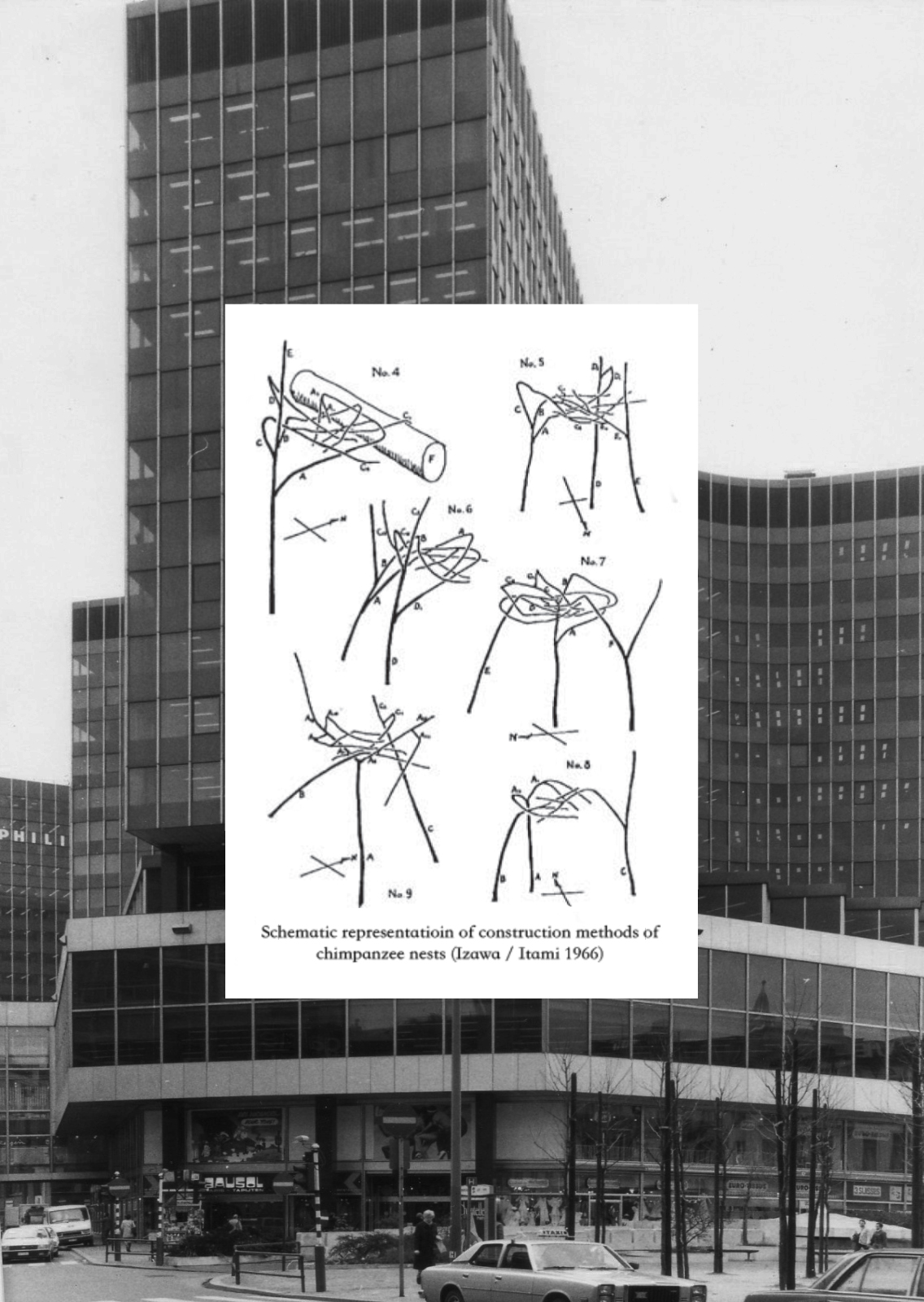Translocal Reconversions: Brussels
By Steven Schenk (Schenk Hattori Architecture Atelier) & Johannes Berry (sugiberry)
This studio is part of the ADO Translocal Reconversions with Harold Fallon (AgwA).
Academic year 2020-21, semester 2, Brussels
Engagements: Craftsmanship, The Brussels Way
This studio will collaborate with the studio of Jan De Vylder (Architecten Jan de Vylder Inge Vinck) at the ETH Zurich and the studio of Yoshiharu Tsukamoto (Atelier Bow Wow) at the Tokyo Institute of Technology.
This studio investigates the reconversion of existing buildings and structures from the second half of the 20th century located in Brussels, which are not yet considered heritage.
These buildings were produced within an international context (modernism) that refuted the relevance of referential and cultural frameworks in favor of a, then new, international style (Barr 1966).
This studio will produce work within a translocal context that questions the relevance of referential and cultural frameworks in favor of an, already existing, universal style (Fujimori 2018). It proposes an architectural anthropological (Egenter 1992) approach, for the interpretation of culture and place, and more specifically material (Semper 1860) and space (Bollnow 1963).
The focus of the reconversion is not programmatic but architectural (material and space). It treats the existing buildings as monuments (Foucault 1969), and approaches their reconversion with an economy of means. It treats the existing buildings like the vernacular builder treats a landscape, not in a the nostalgic sense but in philosophy. There is an understanding of the limits of architecture and a focus on how to live and let live (Rudolfsky 1964).
NOTES
Barr, A H. 1932. Modern Architecture : International Exhibition. pp.13-15. Museum of Modern Art: New York. The term international style was coined by Alfred H Barr, then Director of the museum of modern art who invited Hitchcock and Johnson to curate the exhibition Modern Architecture: International Exhibition. The main principles were stated as Volume instead of Mass, Repetition instead of Summitry, the Expression of Intrinsic Elegance of Materials, Technical Perfection and Proportion instead of Ornament.
Bollnow, O F. 1963. Mensch und Raum. Kohlhammer Veerlag: Stuttgart. (English edition: Bollnow, O F. 2011. Human space. Translated by Christine Shuttleworth. Hyphen Press: London.)
Egenter, N. 1992. Architectural Anthropology : Research Series 1. Structura Mundi: Lausanne.
Rudolfsky, B. 1964. Architecture Without Architects: A Short Introduction to Non-Pedigreed Architecture. pp.12. Academy Editions: London.
Semper, G. 1860. Der Stil in den technischen und tektonischen Künsten, oder Praktische Ästhetik, vol. 1. Frankfurt am Main: Verlag für Kunst und Wissenschaft. (English edition: Semper, G. 2004. Style in the Technical and Tectonic Arts; or, Practical Aesthetics. Translated by Harry Francis Mallgrave and Michael Robinson. Los Angeles: Getty Research Institute.)
Terunobu, F. 2018. “Primitive Design.” Design Talks Plus. NHK: Tokyo. Fujimori states that Late Stone Age architecture across the world share similarities, and is the result of prehistoric man’s relationship with the environment material and construction. He calls it a universal style.
Foucault, M. 1969. L’archéologie du savoir. Éditions Gallimard: Paris (English edition: Foucault, M. 1969. The Archeology of Knowledge and the Discourse on language. pp.7. Translated by A.M. Sheridan Smith. Pantheon Books: New York.) Foucault argues for the relevance of “… the intrinsic description of the monument.” and describes monuments as “…inert traces, objects without context, and things left by the past.”

